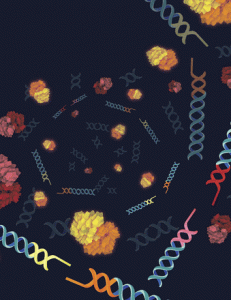Enter your address to receive notifications about new posts to your email.
Science & Publishing
-
Science & Publishing
Using CRISPR for tissue-specific gene knockouts in Xenopus
Why study human diseases in frogs? For starters, 79% of genes implicated in human disease have orthologs in the African clawed frog Xenopus laevis. Frogs also produce hundreds of embryos that can be grown in a dish, meaning they can be manipulated in ways that are impractical on a large scale in mammals. For example,…
-
Science & Publishing
Tales told by ancient human DNA
Archaeologists have long known how to extract millennia-old stories from a single tooth buried in an ancient ruin—and now geneticists have the tools to join them. Advances made in the last several years have enabled researchers to sequence tiny amounts of DNA preserved in very old specimens, such as the material inside a tooth from…
-
Science & Publishing
Hyper-conserved sperm proteins can still evolve rapidly
The fastest-evolving genes in eukaryotes commonly encode reproductive proteins—and the rate at which genes for male reproductive proteins change, in particular, often vastly outstrips the rate of change across the genome as a whole. A recent paper in G3: Genes|Genomes|Genetics describes an unusual exception: the amino acid sequences of the most abundant sperm proteins in…
-
Science & Publishing
New in G3: Genome Reports galore, genomic prediction in cauliflower and trout, and use of a sibling subtraction method
Check out the February issue of G3! Table of Contents Genome Reports Whole Genome Sequencing of Hulunbuir Short-Tailed Sheep for Identifying Candidate Genes Related to the Short-Tail Phenotype Dafu Zhi, Lai Da, Moning Liu, Chen Cheng, Yukun Zhang, Xin Wang, Xiunan Li, Zhipeng Tian, Yanyan Yang, Tingyi He, Xin Long, Wei Wei, Guifang Cao G3: Genes, Genomes, Genetics…
-
Science & Publishing
Battle-scarred flies help us understand the genetics of aggression
Whether it’s a battle over territory or a brawl over a sports game, aggressive behavior is a hallmark of the animal kingdom. The influence genetics has on aggression is undeniable—but the process of determining the genes involved has been frustratingly slow. To better understand genetic factors involved in aggression, some researchers have turned to male…
-
Science & Publishing
February GENETICS Highlights
Check out the February issue of GENETICS by looking at the highlights or the full table of contents! ISSUE HIGHLIGHTS Comparative oligo-FISH mapping: an efficient and powerful methodology to reveal karyotypic and chromosomal evolution, pp. 513–523 Guilherme T. Braz, Li He, Hainan Zhao, Tao Zhang, Kassandra Semrau, Jean-Marie Rouillard, Giovana A. Torres, and Jiming Jiang Development of a eukaryotic karyotype relies…
-
Science & Publishing
To fight malnutrition, geneticists are developing more nutritious corn
Corn feeds millions of people, and its low cost makes it particularly important in developing countries. However, it can’t be relied on as the sole source of protein for either humans or livestock because—like most cereals—corn is low in certain essential amino acids. In the 1960s, a type of corn was discovered with boosted levels of…
-
Science & Publishing
A fly that thrives on a deadly diet
When a noni fruit ripens, it stinks like old cheese—or even vomit. Familiar to many in the form of expensive juices sold as health supplements, this pungent fruit is engaged in a slow-motion arms race with would-be insect pests. Fruit flies are unable to feast on noni—scientific name Morinda citrifolia—because the fruit is dosed with…
-
Science & Publishing
Is a statistical test letting significance slip through the cracks?
Every scientist is familiar with the p-value: it’s one of the most commonly used metrics in statistics to evaluate the likeliness that an observed relationship is due to chance. Typically, a cutoff is set at p=0.05, such that any p-value of greater than 0.05 means the result is deemed “not statistically significant”—a heartbreaking outcome for…
-
Science & Publishing
Beyond BRCA: new players in breast cancer pathways discovered
Mutations that disrupt the gene BRCA2 dramatically increase the odds of developing breast and ovarian cancer—but such mutations aren’t enough to cause cancer on their own. To turn normal cells cancerous, some of BRCA2’s genetic interactors must also mutate. In an article recently published in GENETICS, Ding et al. sought to identify some of these genes.…
-
Science & Publishing
New in G3: mutant screens, Japanese quail evolution, and mating design in MAGIC sorghum
Check out the January issue of G3! Table of Contents Genome Report Reference Assembly and Annotation of the Pyrenophora teres f. teres Isolate 0-1 Nathan A. Wyatt, Jonathan K. Richards, Robert S. Brueggeman, Timothy L. Friesen G3: Genes, Genomes, Genetics January 2018 8: 1-8; DOI: https://doi.org/10.1534/g3.117.300196 Mutant Screen Reports Mapping Second Chromosome Mutations to Defined Genomic Regions in…


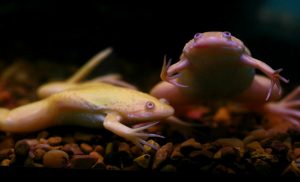
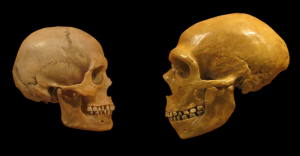

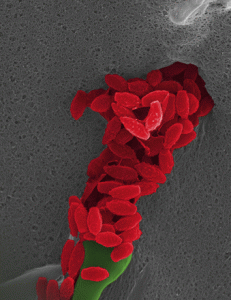
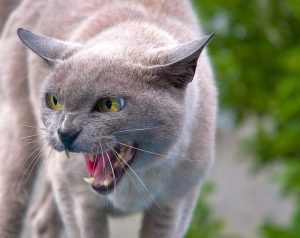

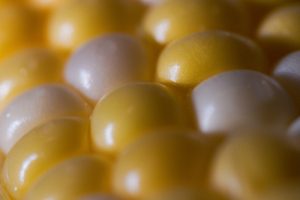
![Image by Michael Hermann (Own work) [CC BY-SA 3.0], via Wikimedia Commons.](https://s43361.pcdn.co/wp-content/uploads/2018/01/Webp.net-resizeimage-19-300x225.jpg)

![Image by unknown photographer [Public domain], via Wikimedia Commons.](https://s43361.pcdn.co/wp-content/uploads/2018/01/Webp.net-resizeimage-17-300x221.jpg)
